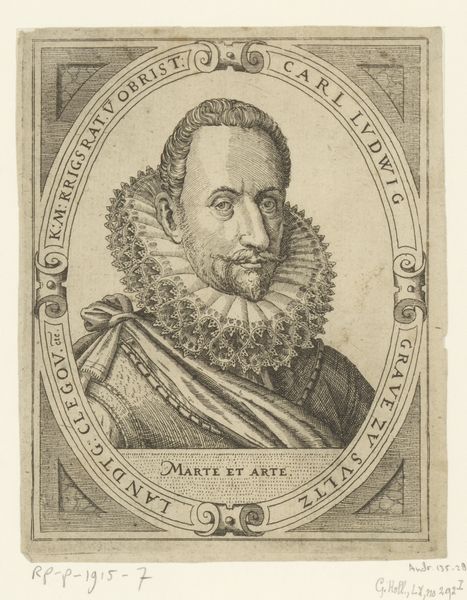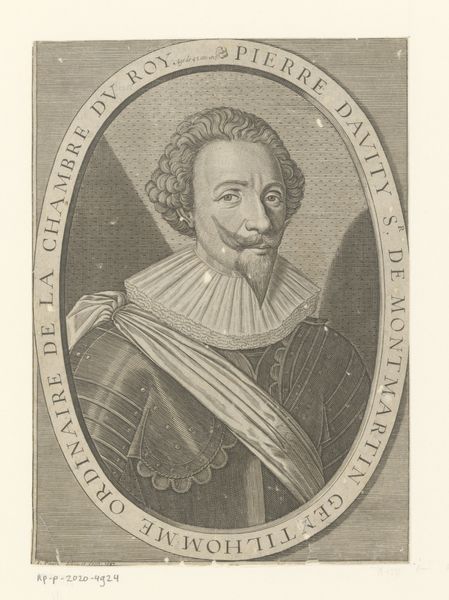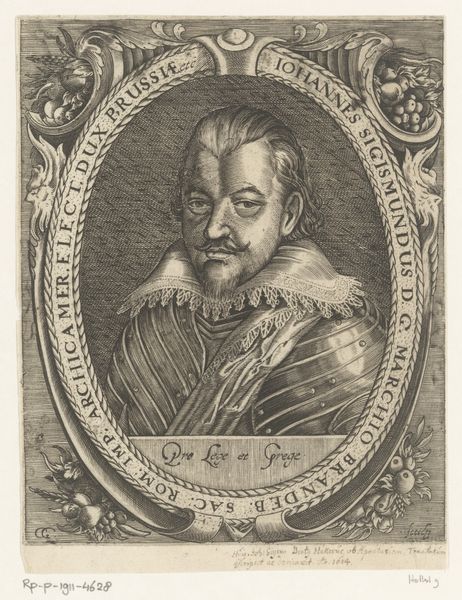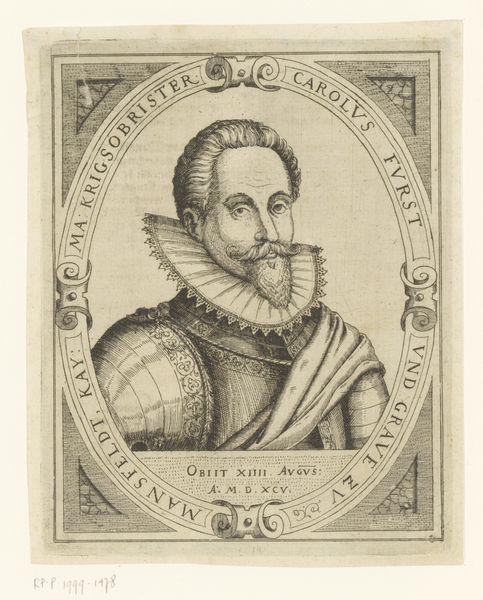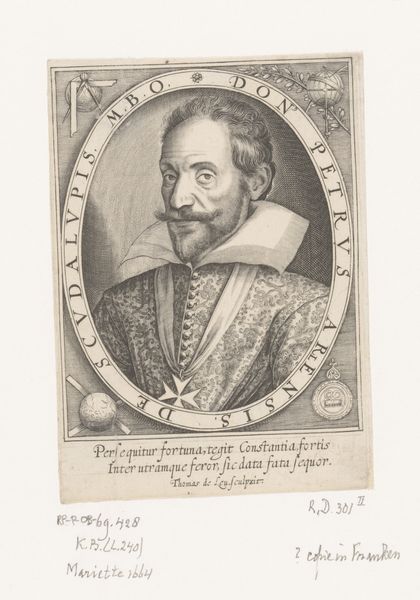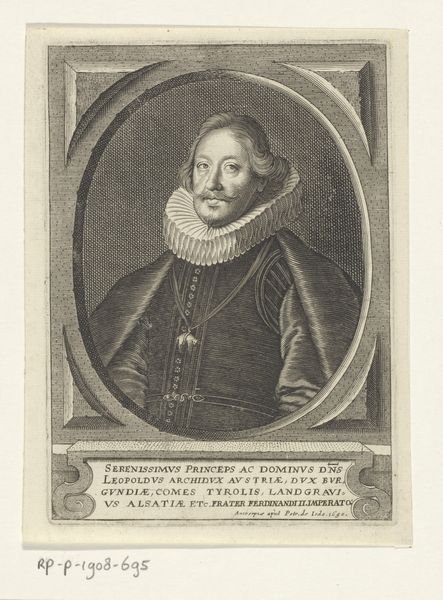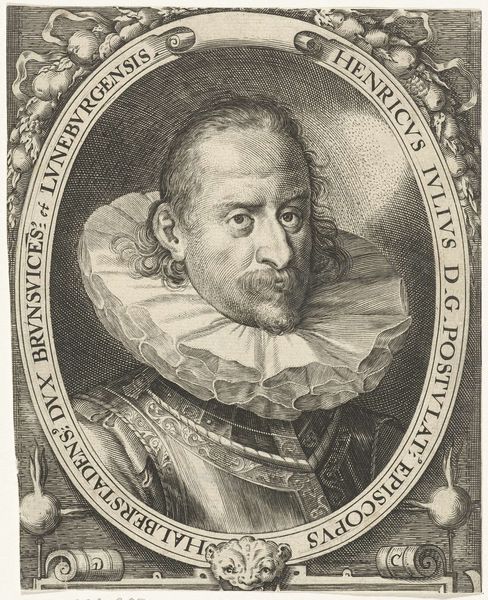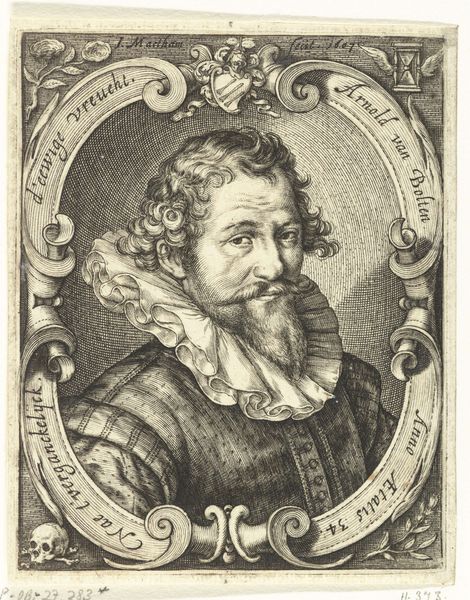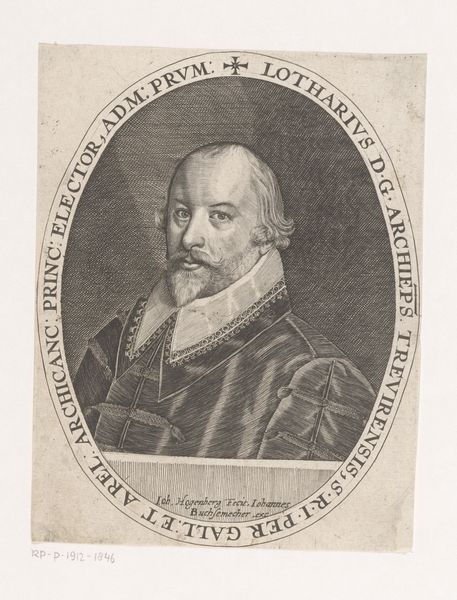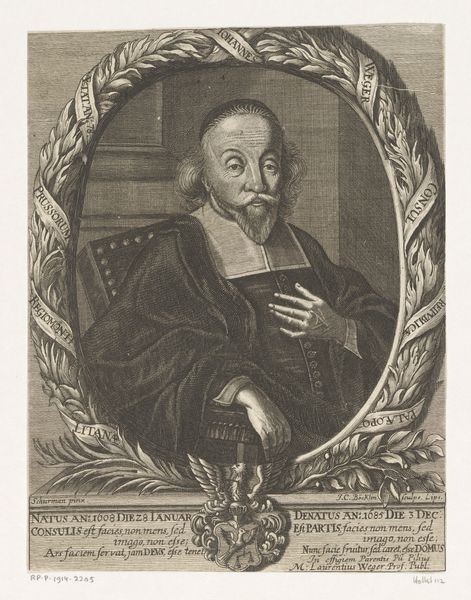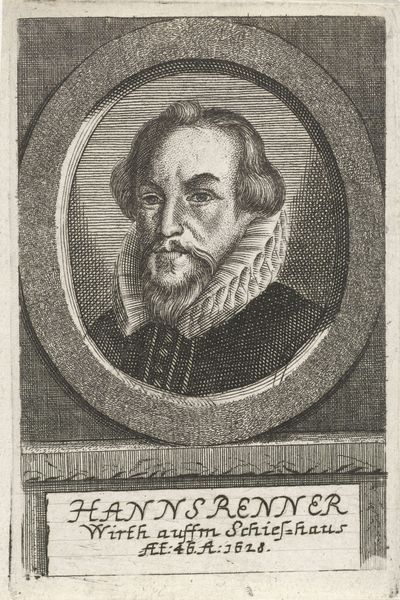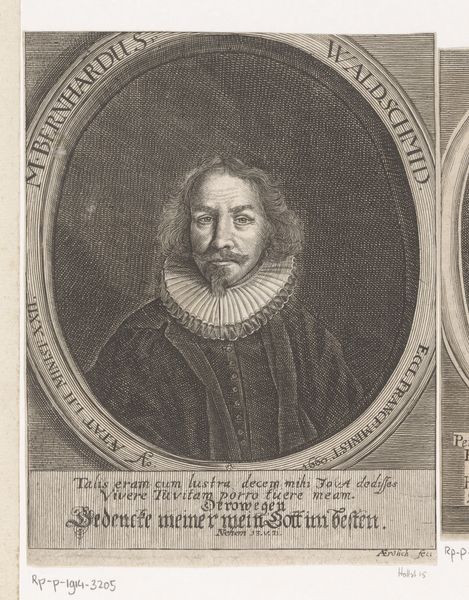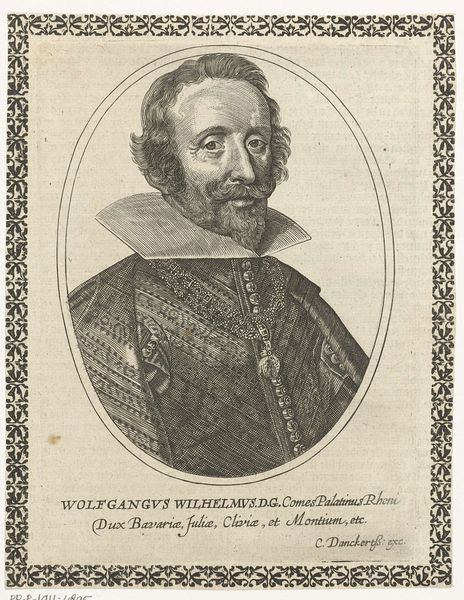
print, engraving
#
baroque
# print
#
engraving
Dimensions: 181 mm (height) x 114 mm (width) (plademaal)
Curator: Let's discuss this portrait engraving of Richard Sackville, Earl of Dorset, created in 1617 by Simon de Pas. What strikes you first? Editor: The texture. It’s all hatching and cross-hatching. Look at the lace ruff! It must have taken incredible precision. And the way light catches the metallic threads in his doublet. You can almost feel the weight of the fabric. Curator: These portrait prints played a vital role. They circulated images of the aristocracy and nobility, shaping public perception of power and status. This image, specifically, demonstrates Sackville's claim to authority, reinforced through both image and inscription. Editor: Exactly, the craftsmanship emphasizes the subject’s elite status. The act of creating something so intricate from a metal plate—think of the skilled labor involved—and reproducing it multiple times for distribution, highlights the culture of display. The engraving is the result of intense human labor that elevates Richard Sackville as it documents him. Curator: He looks like a man very aware of his public persona. It’s intriguing to consider where such images would be displayed—taverns, private homes, maybe even used for political purposes? The print democratized portraiture somewhat, even though its reach was still limited by literacy and affordability. Editor: Did de Pas have direct access to the Earl? Was there a collaborative relationship where the Earl of Dorset provided feedback during the creation? I’m wondering about the direct material relationship of subject and producer. Curator: Perhaps, or he may have been working from an earlier painted portrait. It was common practice. The engraver’s skill was in translating the nuances of paint into line. What does this tell us about value judgements, when painting held so much more cultural importance at the time? Editor: Yes! How these portraits, made with relatively 'base' materials like metal, ink, and paper, contribute to constructing identity and solidifying social hierarchies is amazing. These engravings and prints reveal how art production functioned within structures of labor. Curator: So it's the fusion of the artistic and the mechanical that captures your attention most? I find myself considering the way this type of image played an active role in cultivating a ruler's public image during this turbulent historical time. Editor: I think that studying how this era leveraged different material processes and practices of image making is necessary for gaining a more nuanced understanding of 17th-century culture and its visual representations.
Comments
No comments
Be the first to comment and join the conversation on the ultimate creative platform.
